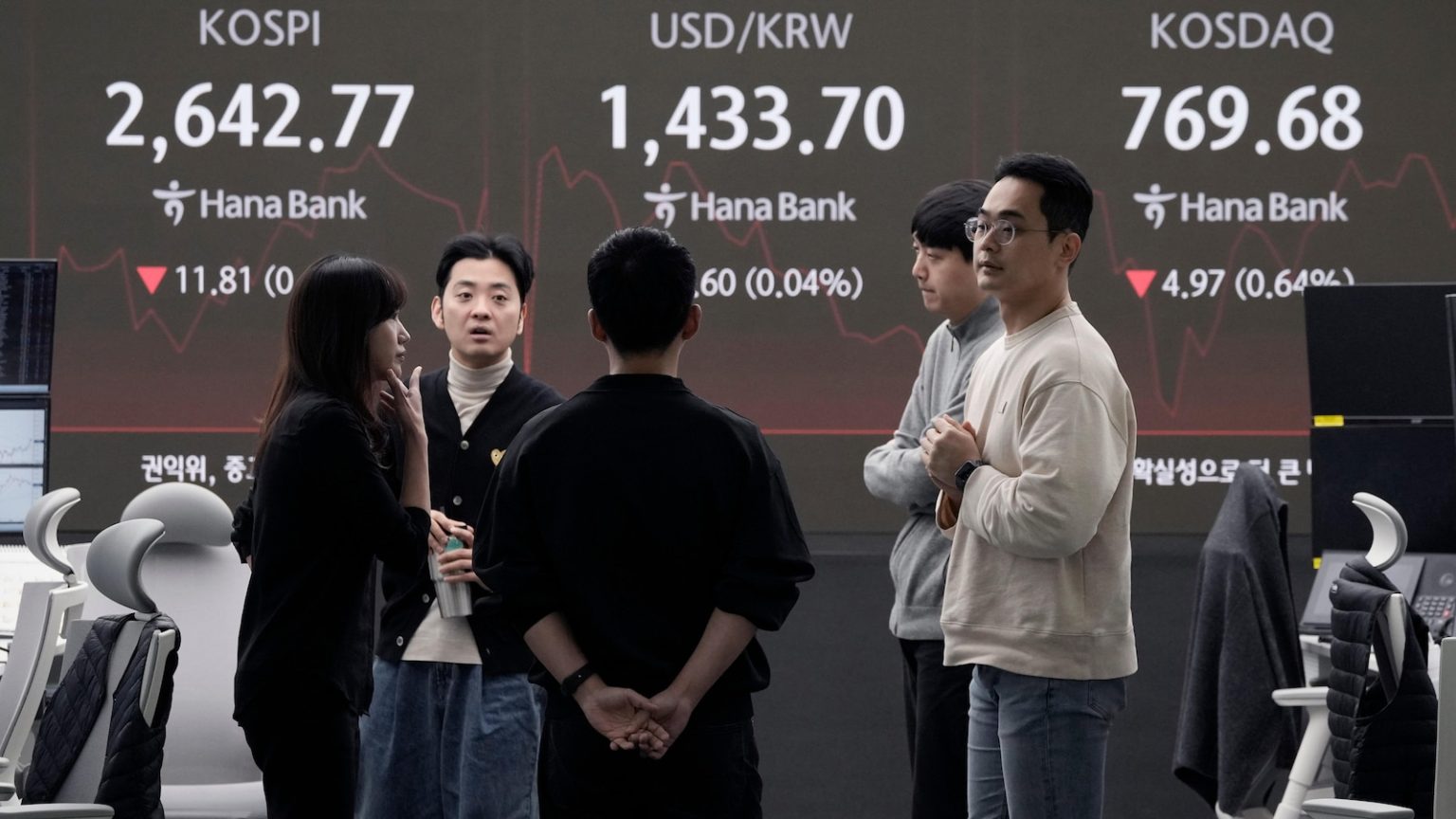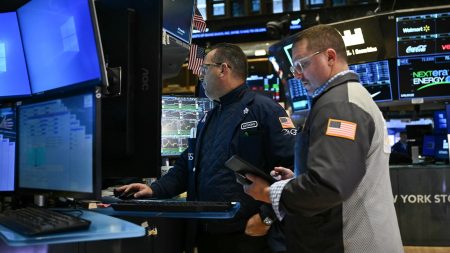Asian Markets Show Mixed Results Amid U.S. Economic Uncertainty
Asian stock markets displayed a mix of gains and losses on Monday as investors reacted to sharp declines in U.S. stocks on Friday. The declines were fueled by concerns over the U.S. economy, which appears to be slowing down due to consumer and business anxiety over President Donald Trump’s policies. While the Tokyo market was closed for a holiday, other regional markets reflected the uncertainty.
Hong Kong’s Hang Seng index inched up 0.1% to 23,494.21, while the Shanghai Composite index dipped 0.2% to 3,373.03. In Australia, the S&P/ASX 200 rose 0.1% to 8,308.20. However, South Korea’s Kospi fell 0.4% to 2,645.27, and Taiwan’s Taiex dropped 0.7%. India’s Sensex also declined by 1%. These mixed results highlighted the region’s sensitivity to U.S. economic trends and policy developments.
U.S. Economic Data Sparks Sell-Off on Wall Street
The U.S. stock market experienced its worst day in two months on Friday, with the S&P 500 plummeting 1.7% to close at 6,013.13. The Dow Jones Industrial Average dropped 748 points, or 1.7%, to 43,428.02, while the Nasdaq composite fell 2.2% to 19,524.01. This sell-off was triggered by weaker-than-expected reports on the U.S. economy, which suggested that business activity is nearing a standstill.
A report by S&P Global revealed that U.S. business activity slowed to a 17-month low, with services sector activity unexpectedly shrinking. Companies expressed widespread concerns about the impact of federal government policies, including spending cuts, tariffs, and geopolitical tensions. Chris Williamson, chief business economist at S&P Global Market Intelligence, noted that uncertainty over these policies is denting sales and driving up prices due to tariff-related hikes.
Global Economic Slowdown Looms Large
The U.S. economic slowdown is not occurring in isolation. Ken Wattret, a global economist at S&P Global, warned that rising U.S. tariffs and related countermeasures have been factored into forecasts since December 2024. Trade weakness is expected to be the primary driver of a slowdown in global real GDP growth rates this year. Weaker investment is also identified as a key downside risk, further complicating the outlook for the global economy.
These developments are particularly concerning for trade-dependent economies in Asia, many of which have already seen their exports weaken in recent months. The region’s markets are bracing for potential spillover effects from the U.S. slowdown, as global supply chains and trade relationships become increasingly strained.
U.S. Consumers Brace for Higher Inflation
Adding to the economic concerns, U.S. consumers are increasingly pessimistic about the future. A survey by the University of Michigan showed that consumers now expect inflation to rise by 4.3% over the next 12 months, up from their previous forecast of 3.3%. This shift in expectations reflects growing worries about the impact of potential tariffs on import prices.
Higher inflation could have significant implications for consumer spending and economic growth. With mortgage rates already at elevated levels, the housing market is also feeling the strain. Sales of previously occupied homes fell short of expectations last month, as high mortgage rates and expensive home prices continued to deter buyers.
Small-Cap Stocks and Corporate Earnings Take a Hit
The downturn in U.S. stocks disproportionately affected smaller companies, whose fortunes are more closely tied to the domestic economy. The Russell 2000 index of small stocks saw a sharper decline than the broader market, reflecting investor concerns about the outlook for these businesses.
Even companies that reported strong earnings were not immune to the sell-off. Akamai Technologies, a cybersecurity and cloud computing firm, saw its stock plummet 21.7% despite exceeding profit expectations. Investors instead focused on the company’s disappointing revenue forecasts for the upcoming year, which fell short of analyst expectations.
Federal Reserve Faces a Dilemma on Interest Rates
Before Friday’s sharp drop, the S&P 500 had been on track for a week of relatively little movement, buoyed by a series of better-than-expected corporate earnings reports. However, the latest data has refocused attention on the challenges facing the U.S. economy.
The Federal Reserve, which has held interest rates steady in recent months, now faces a difficult decision. While lower rates could stimulate economic growth, they risk exacerbating inflation, which has remained stubbornly high. At their last policy meeting in January, Fed officials expressed concerns that Trump’s proposed tariffs and other policies could push inflation higher.
Oil Prices and Currency Movements Reflect Economic Uncertainty
In other markets, U.S. benchmark crude oil fell by 11 cents to $70.29 per barrel, while Brent crude dropped 7 cents to $73.98 per barrel. The U.S. dollar strengthened to 149.43 Japanese yen, up from 149.24 yen, and the euro rose to $1.0514 from $1.0462.
These movements underscore the broader economic uncertainty and the ongoing impact of U.S. policy developments on global markets. As the situation continues to unfold, investors are likely to remain cautious, closely monitoring both U.S. and global economic data for signs of further weakness or stabilization.















